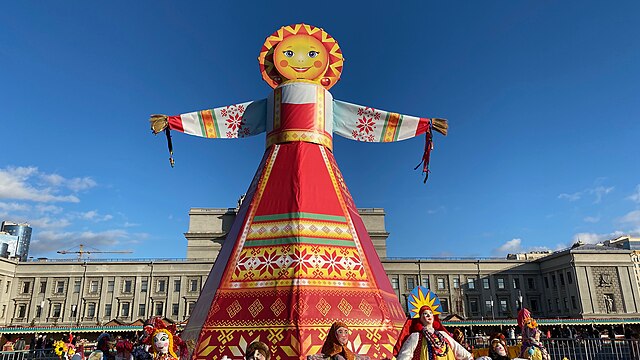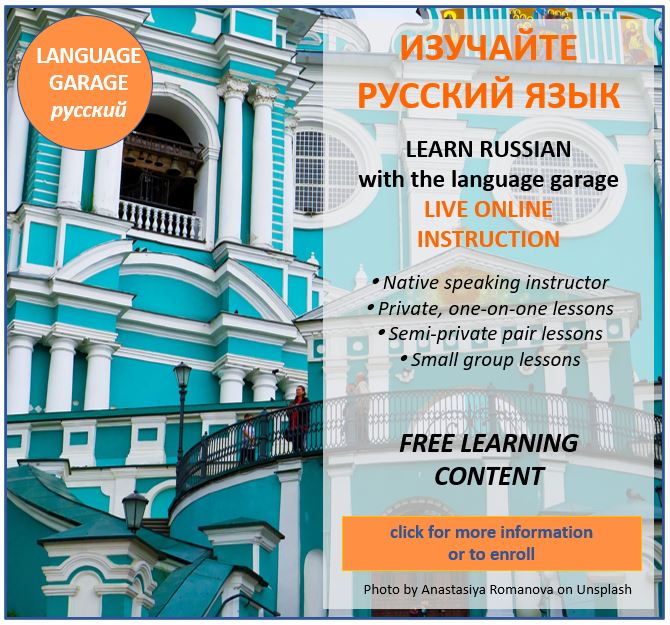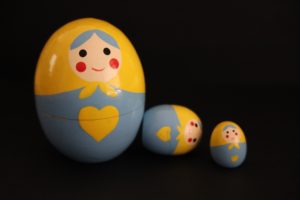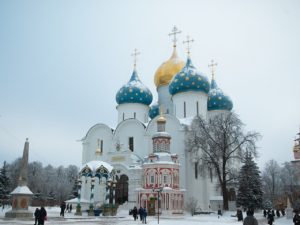Maslenitsa: Russia’s Ancient Slavic Festival of Pancakes and Farewell to Winter
Мaсленица (Maslenitsa) is one of Russia’s most vibrant and joyous festivals. People celebrate it as a farewell to winter and a herald of the coming spring. The holiday’s roots come from both both pagan traditions and Orthodox Christian customs. Maslenitsa is also known as Блинная неделя (Bliny Week) because of the central role that блины (blini), or thin Russian crêpe-like pancakes, play in the festivities.
Origins and History of Maslenitsa
Maslenitsa predates Christianity in Russia. It originated as a pagan festival to honor the sun god ЯрилоYarilo. Ancient Slavs believed that by celebrating with feasts, games, and merriment, they could ensure a good harvest and a prosperous year. After Christianity spread through Kievan Rus in the 10th century, Maslenitsa was incorporated into Orthodox traditions, taking place during the last week before Великий пост (Great Lent). Great Lent is a 40-day period of prayers and fasting in the Eastern Christian churches leading up to Easter. During the week of Maslenitsa, just before Great Lent, Orthodox Christians refrain from eating meat. But they can still enjoy dairy products, eggs, and fish, which makes bliny the perfect food for the occasion.
Traditions and Celebrations of Maslenitsa
Maslenitsa lasts for a full week, and each day has special customs and activities. The week is filled with blini feasts, катание с гор (sledding), snowball fights, games, and костёр (bonfires). One of the most famous customs is the burning of the чучело Масленицы (Maslenitsa effigy), a straw figure dressed as a woman that symbolizes winter. By burning the effigy, people bid farewell to the cold season and welcome spring. Each of the days of Maslenitsa has a name and specific customs:
- Monday – Встреча Масленицы (Welcoming the Maslenitsa Celebration): The festival officially begins with the construction of the Maslenitsa effigy. This is a straw figure dressed in bright clothes, representing winter. Families start making bliny, whose color and shape symbolize the sun.
- Tuesday – Заигрыши (Flirting/Playtime): The day is filled with sledding, horse-drawn sleigh rides, and games. Traditionally, young people would flirt and participate in matchmaking activities.
- Wednesday – Лакомка (Sweet Tooth): Families and friends visit each other to share food, particularly bliny with various toppings such as sour cream, jam, honey, and caviar.
- Thursday – Разгул (Revelry): The festivities reach their peak with outdoor performances, music, and mock battles, including the famous кулачные бои (bare-knuckle boxing).
- Friday – Тёщины вечёрки (Mother-in-Law’s Evenings): Sons-in-law visit their mothers-in-law, who prepare a feast of bliny to strengthen family bonds.
- Saturday – Золовкины посиделки (Sister-in-Law’s Gatherings): Young brides invite their sisters-in-law and other female relatives to celebrate together.
- Sunday – Прощённое воскресенье (Forgiveness Day): People ask for forgiveness from family, friends, and even strangers, saying Прости меня (Forgive me). The Maslenitsa effigy is burned in a bonfire, symbolizing the end of winter and the cleansing of sins before Great Lent begins.
Food: The Heart of Maslenitsa
The undisputed culinary star of Maslenitsa is блины (blini), which resemble the sun in shape and color. These thin, crepe-like pancakes are made from flour, eggs, and milk or кефир (kefir). They can be served with sweet or savory toppings, including:
- сметана (sour cream)
- мёд (honey)
- икра (caviar)
- варенье (jam)
- масло (butter)
People often make large quantities of blini for the festivities. It is even common for families to compete in making the thinnest or most delicious blini.
Other traditional dishes include:
- сырники (syrniki): Fried quark/cheese-curd pancakes, often served with sour cream and jam.
- пирожки (pirozhki) Small pastries stuffed with various fillings like potatoes, meat, or cabbage.
- медовуха (medovukha): A honey-based alcoholic drink, similar to mead, enjoyed during festivities.
Music, Dance, and Clothing
Folk music and dances play an essential role in Maslenitsa. Traditional балалайка(balalaika) performances, accordion music, and group dances like хоровод (khorovod, a Slavic circle dance) are common. Revelers dress in colorful, embroidered folk costumes, and some wear ушанка (fur hats) to keep warm during outdoor celebrations.
Maslenitsa in Modern Russia
While Maslenitsa has deep historical roots, it remains a significant cultural event in Russia, Ukraine, Belarus, and other Slavic countries today. Cities organize large public festivals with concerts, ice sculptures, and theatrical performances. Even outside of religious circles, Maslenitsa is a time for socializing, enjoying comfort food, and embracing the transition to spring. Maslenitsa remains a beloved tradition, reminding people of the resilience of Slavic culture and the joy of welcoming the sun after a long, harsh winter. С Масленицей! (Happy Maslenitsa!)
Get on the road to speaking Russian with the Language Garage!
We hope you’ve enjoyed learning about Maslenitsa. If you’d like to learn more:
- Follow us on Facebook, LinkedIn, BlueSky, Twitter, Threads, Instagram, or Pinterest. We publish lots of Russian vocabulary, grammar, and culture notes, so it’s a great way to pick up some new vocabulary and practice.
- Check out our other posts on Russian language, culture, and more.
- Enroll in affordable, flexible, and personalized private online Russian lessons or sign up for a small group online Russian class.
- Create a free Language Garage account to access tons of Russian vocabulary, grammar, and culture.
Image Source: Wikimedia Commons






